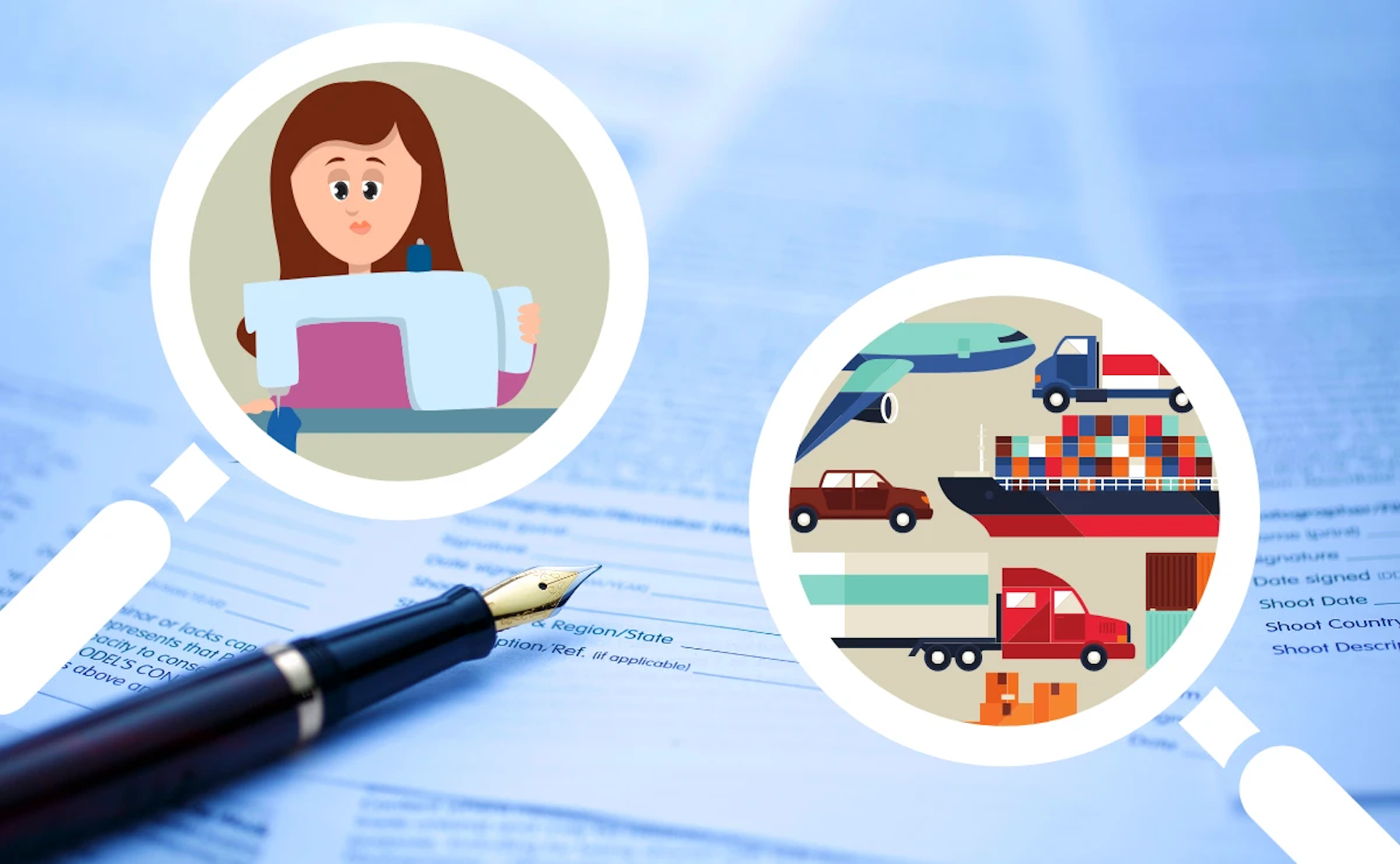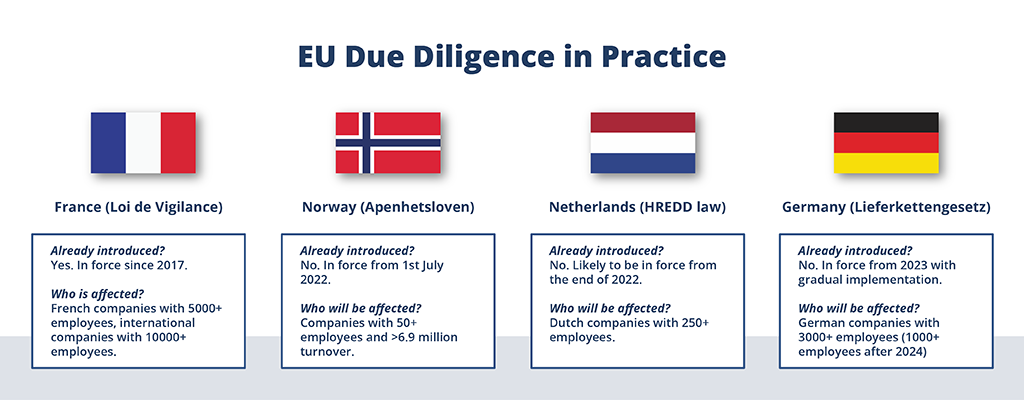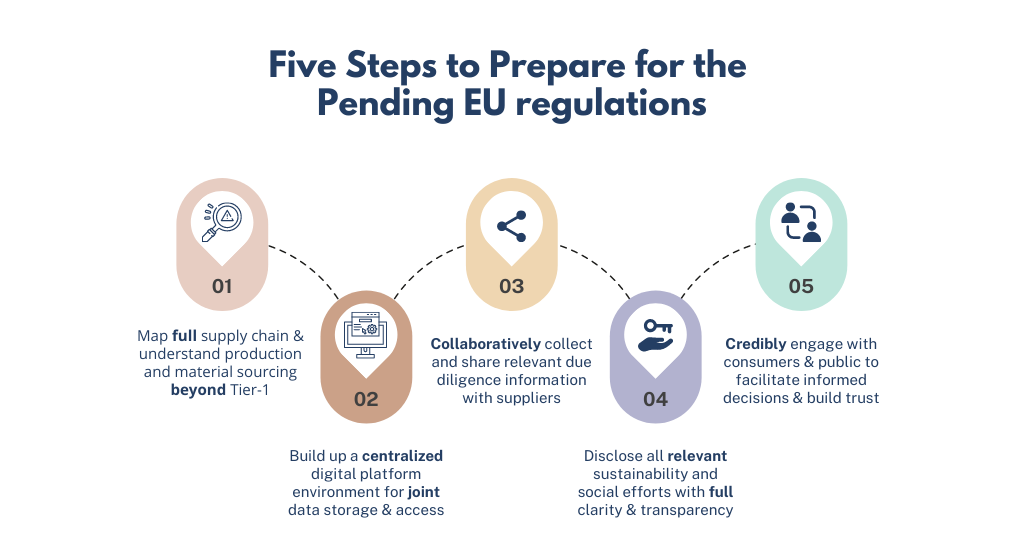
By Jessi Walker
5 minute read
Jessi Walker By Jessi Walker
5 minute read
On February 23, the EU commission released a proposal for a Directive on ‘Corporate Sustainability Due Diligence’ (CSDD) to require EU member states to transpose corporate due diligence duty into national law, impacting a company's own operations, its subsidiaries and their value chains. Fashion companies in France, Norway and the Netherlands have already felt the strong arm of the law under the scrutiny of early adoption legislation. The rest of us know it is coming, but defining what that is, how it will impact fashion businesses and what to do to prepare is still clouded in confusion.
We outline whom it addresses, how the future of fashion supply chains will look and most importantly, what you should be doing to prepare for the storm to come.
The directive was rolled out as part of a long-awaited effort to increase corporate accountability and harmonize legal requirements on an EU-wide scale. While they can sufficiently mitigate issues surrounding worker exploitation and biodiversity loss, they will also tackle supply chain hardships on the home front of many brands, eventuating in a reduction of costs and losses. However, only a quarter of companies recently polled are capable of fulfilling its robust requirements. This is forcing many of the companies affected into a ‘do-or-die’ scenario.
What is Due Diligence and why is it needed?
Following the definition of the OECD, due diligence can be defined as
..the processes through which enterprises can identify, prevent, mitigate and account for how they address their actual and potential adverse impacts.
While fashion & apparel supply chains become even more complex to cover various overseas suppliers & mounting SKU levels all while maintaining a streamlined flow of goods to service conflated consumer expectations, the possibility of actual or even potential adverse impacts on society & the environment ten fold. Many (supra)national institutions advocate for clearer due diligence laws and regulations for each company to take responsibility and ownership for their business actions without the luxury of legal gray areas.
So far, there are only a few EU member state signatories who have implemented due diligence legislations in preparation, inspiration and independence from the impending EU-wide directive:
 So given that even those who already implemented national regulations target different players (in terms of industry and company size) and sanction other misdeeds, many agree that the world needs more harmonized legal standards to jointly tackle problems like child labor, worker exploitation and climate change on a larger scale.
So given that even those who already implemented national regulations target different players (in terms of industry and company size) and sanction other misdeeds, many agree that the world needs more harmonized legal standards to jointly tackle problems like child labor, worker exploitation and climate change on a larger scale.
What does the Corporate Sustainability Due Diligence (CSDD) EU Directive cover?
Whilst the CSDD directive is currently still just a proposal, it is expected to come into effect within the year, once presented to the European Parliament. After its enactment, EU member states will have two years to integrate the directive into their national law.
The directive will not only apply to a brand’s own operations, but also to the ones of its subsidiaries and supply chain partners that can quickly become the make or break factor when having to comply on so many different levels.
But how does the EU Commission actually expect all of that to play out?
First and foremost, brands need to make due diligence a mandatory, company-wide policy and integrate its ideals into their full operative value chain. This starts by mapping out all the areas, where a brand and its suppliers (potentially) cause threats for society and environment. For all of these identified areas, brands need to initiate the right measures to mitigate – or best case scenario: resolve/prevent – their negative impacts. These measures need to be carefully monitored on an ongoing basis and aligned with thorough maintenance procedures. Because ultimately, it will be the brands own legal responsibility to protocol their full due diligence performance, as well as publicly communicate on it – and potentially get sanctioned for misconduct.
Who will be affected by the new EU directive?
Currently, the proposed EU Directive targets European companies with over 500 employees and/or above EUR 150 million of annual net turnover.
For defined high-impact sectors (to which the fashion & textile industry belongs), European companies with over 250 employees and/or above EUR 40 million of annual net turnover will also need to make the necessary amendments to their business operations.
The same will also account for Non-Eu companies, which are active in Europe and exceed the previously stated thresholds across their EU-wide operations.
While we are looking at an estimated total of 13,000 affected European companies here, the directive in its present form still only addresses a tiny fraction of the overall share of businesses. Europe’s small and medium-sized enterprises (SMEs), making up more than 99% of the business landscape, are not at the directive’s center of attention. As transparency and CSR should be seen as fundamental building blocks of any responsible company, independent of size, this matter currently also fires the debate.
Critics say that this directive ignores a substantial share of harmful business practices, as staff- and turnover numbers alone aren’t reliable indicators of how a company impacts the global lives of communities and workers. This is why in one way or another, the full industry will need to start implementing robust sustainability standards sooner than later. Not only for the sake of society and the environment, but also for the future sake of the own corporation.
How can brands prepare for what’s to come?
One of the toughest hurdles for affected fashion brands will be aggregating data from their own operations in combination to accessing data, certifications, and audits from their supply chain partners in a timely manner, if the data exists at all. The only way to sufficiently combat the reporting bottle neck is to prepare now, for what’s to come. A well-nurtured supplier relationship, alongside an agile digital environment will be the winning formula for Due Diligence success.
